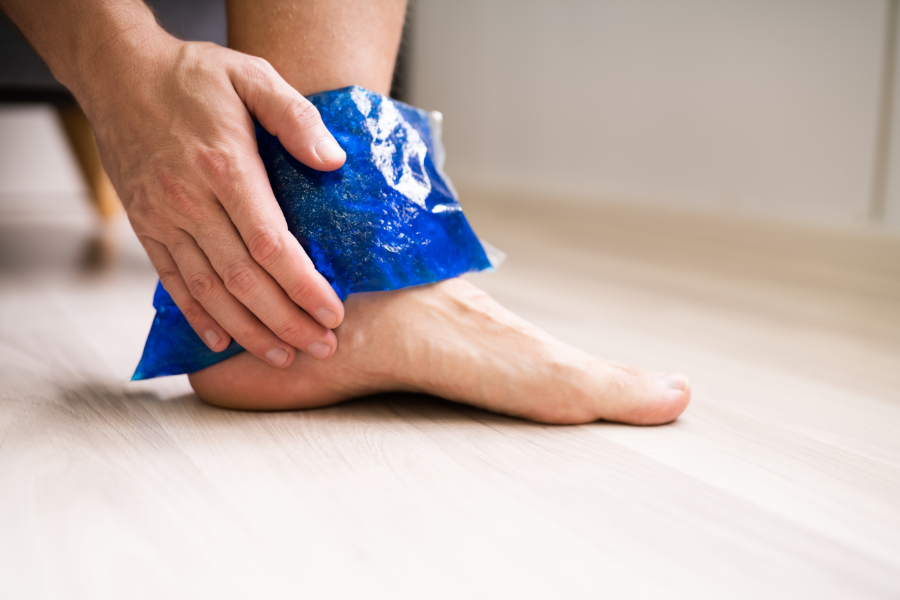What is Missing From Your Return to Running Plan?
- mtscait
- May 23
- 3 min read
As a PT and a track and field coach, I am often seeing patients and athletes that aren't happy with their return to running plan. They aren't making progress or they still have pain. Often there are things missing from the plan, and some simple adjustments can make sure you are returning to running pain free and stronger than before.
I wasn’t always interested in running - I dreaded the mile in elementary school. I did my best to avoid events over 800m when I ran track in high school and college. At some point in PT school running became a stress relieving outlet for me. I did my first half marathon during PT school, and since then have done a lot more races and even have joined a running group. I like exploring new areas, I like the running community, and I especially like making sure others can enjoy it.
I’ve personally completed two major return to running programs after surgery - the first in 2013 after tearing my right ACL, and the second in 2016 after tearing my left ACL. I learned a lot from my own experience, and I have the formula fairly fine tuned at this point.

With this in mind, I’ve compiled my top tips for returning to running (they also work well for starting running for the first time too!):
Take it slow - both with the pace and volume. If you haven’t ran in a while, and especially if you had an injury, it will be a lot easier to slowly introduce running back into your life.
Example: After my knee surgery, I started running with a 20 minute workout: 30 seconds of running, 4 minutes and 30 seconds of walking, four times. I did this 2 times per week to start. I adjusted the ratio week to week by 30 seconds, until eventually I was running a full 20 minutes. I had a specific prescription of workouts that were tailored to my needs which included what pace, what incline, and work to rest ratios.
Listen to your body's cues - while progressing through a return to run program, you make adjustments based on how you are feeling.
You can use a pain scale to determine if you are to continue an exercise:
0 = no pain, 10 = you are about to pass out due to the pain.
No pain = good to go
2-3/10, doesn't increase = proceed with caution
Pain decreases as you do the exercise = keep going
Pain increases as you do the exercise = stop, scale back weight, reps, or sets.
You can also use a pain scale to help progress:
No pain = good to progress to the next phase
1-2/10 increase = ok to continue at the same phase, but don't progress to the next
3-4+/10 increase = regress to the prior phase
Eat enough food - especially if you are recovering from an injury or surgery. Running will burn more calories vs walking, so make sure you are eating enough nutritious food to keep your body moving. Food is the building blocks your body uses to recover.
Prioritize sleep - getting 7-8 hours a night will help maximize recovery. Our bodies do their recovery during deep sleep, so the better and longer sleep you get, the better you will recover!
Include strength training - strength will keep you stable and can help reduce risk of injury, plus make you faster. When I went to college I shaved 3 seconds off my 200m time (for the non-sprinters out there, that’s a whole lot) and the only adjustment to my training was adding in strength work.
Get help from a professional - it makes it a whole lot easier to get help from someone who is an expert in running. I work with runners all the time - helping them with form, injury recovery, and programming. Even being an expert in this realm, I still benefit from getting an outside opinion on my own form and programming. An extra set of eyes can really help fine tune things!
About the author: Dr. Caitlyn Hauswirth-Varis, PT, DPT, OCS, CFMT, CF-L1

Caitlyn is a board certified orthopedic physical therapist. Outside of PT, she is a high school track and field coach, and has worked with adult athletes to prep for races anywhere between a 5k and a 50k.
Disclaimer: This blog post is for informational purposes only and does not substitute for professional medical advice. Please consult with a qualified healthcare professional for personalized guidance.
.png)



Comments